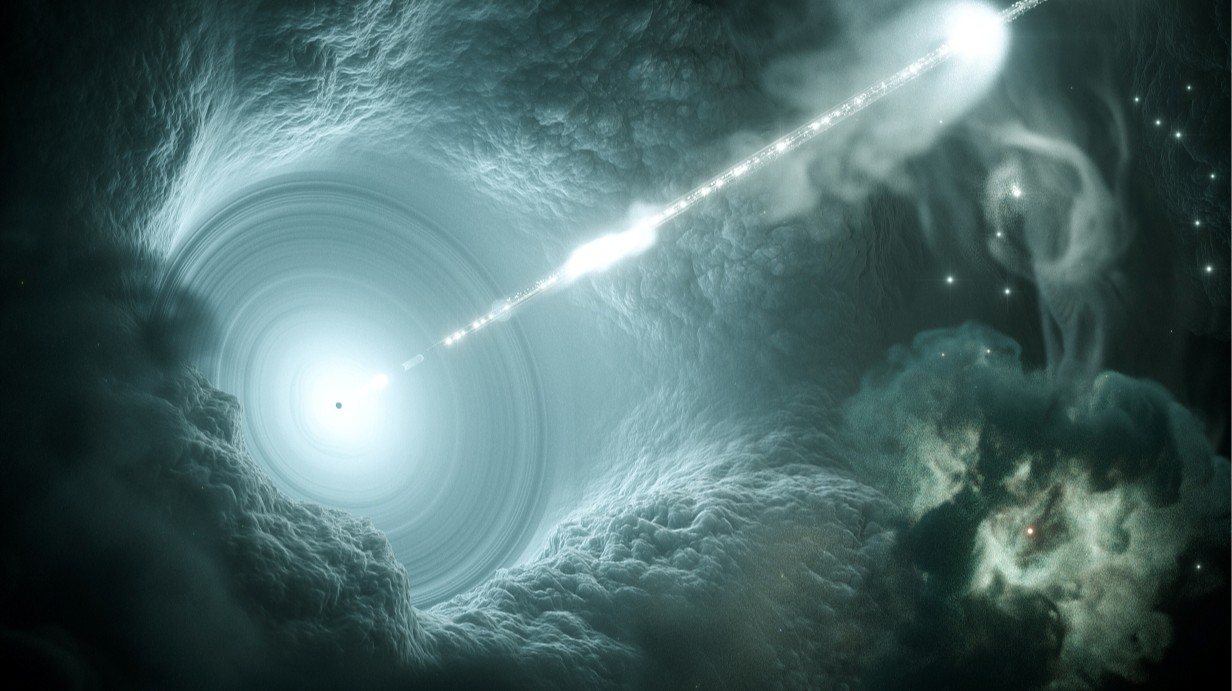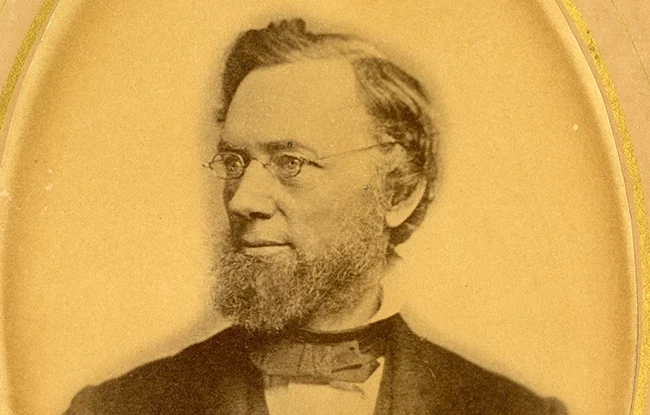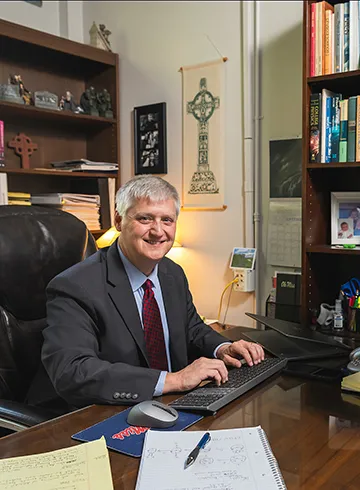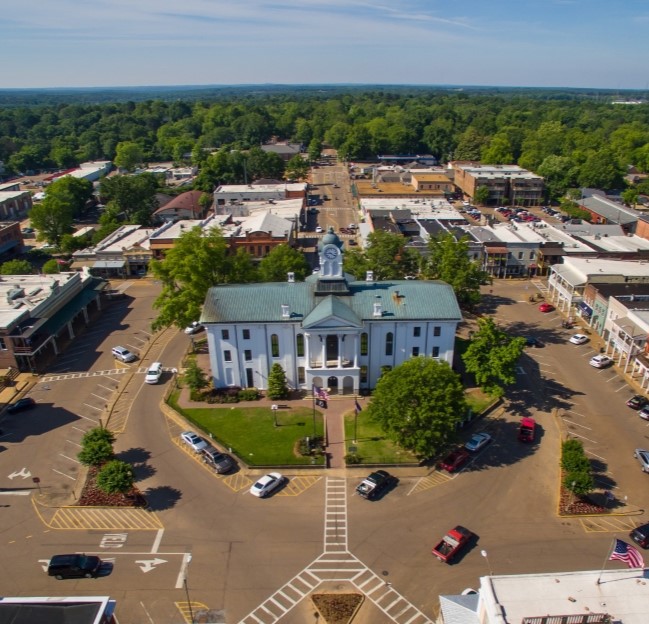About the Center for Multimessenger Astrophysics
Bringing together cutting-edge research, student training, and public outreach to explore the universe—fulfilling a long-standing vision to make Ole Miss a leader in astrophysics.

Artist illustration of a blazar, a jet of material ejected from a supermassive black hole.
Image Credit: DESY/Science Communication Lab
Achieving the Vision
The UM Center for Multimessenger Astrophysics (UMCMA) was established within the Department of Physics and Astronomy in 2019. The Center was founded on a strong faculty component working at the interface of gravitational astronomy and particle physics and allows UM researchers to play a prominent role in the emergent field of multimessenger astrophysics across the nation.
The Center's infrastructure and coordinated efforts are providing UM faculty and students with integrated resources and national recognition that are strengthening the UM role in research and scholarship, as well as enhancing UM graduate programs in science and technology. The Center enhances UM competitiveness in securing external funding, boosts recruitment and retention of high-profile faculty and students in the physics and astronomy programs, and serves Mississippi's community through the educational and public engagement initiatives that the Center pursues.
Since the inception of the UMCMA, the Department of Physics and Astronomy has hired top-tier tenure-track faculty in high energy physics (Dr. Gavin Davies), gravity (Dr. Anuradha Gupta), and most recently, electromagnetic radiation (Nicholas MacDonald) research. With MacDonald's addition to the Center, the UMCMA now has expertise with all three major astrophysics multimessengers: gravitational waves, particles, and EM radiation.
In many ways, the UMCMA finally (after 160 years!) fulfills Chancellor Barnard's vision of making the University of Mississippi a leading center for studying the farthest reaches of the universe.
-

Chancellor Barnard (1858-61)
Frederick A.P. Barnard aspired to make UM a leading scientific institution. Originally a professor of math, physics, and civil engineering, he convinced the legislature to purchase a large collection scientific instruments, including the world's largest telescope, and to construct an observatory. Due to the Civil War, the telescope never arrived on campus and Barnard left UM. However, his legacy lives on.
Chancellor Barnard's vision

From the Director
Welcome to the UMCMA, where we look at, listen to, and interact with all the signals the cosmos is sending us from the farthest reaches of the universe to understand how it all works. We do it right here in Mississippi and at facilities across (and above!) the globe, and we're also doing it for Mississippians.
The Center not only supports the research we do but also prioritizes sharing that science with our neighbors. We go all over the state to share the glories of our universe and let our students know that they can Stay in the 'Sip to take these cosmic trips themselves!
Please visit us on campus anytime or let us know when and where we can come see your group to tell you all about what we're learning.
Breese Quinn
Professor of Physics and Astronomy and Director of the Center for Multi-messenger Astrophysics
Post-Docs and Students
High Energy Partical Group
| Name | Position | |
| Dr. On Kim | Postdoc, Fermilab | okim@olemiss.edu |
| Dr. Jeffrey Kleykamp | Postdoc, Fermilab | jdkleyka@olemiss.edu |
| Byungchul Yu | Graduate Student Fermilab | byu1@go.olemiss.edu |
| Zahin Rabbi | Graduate Student | zrabbi@go.olemiss.edu |
| Andrew Dye | Graduate Student, Fermilab | ajdye@go.olemiss.edu |
| Bishnu Acharya | Graduate Student | bachary1@go.olemiss.edu |
| Xiaoyan Huang | Graduate Student | xhuang6@go.olemiss.edu |
| Noah Knutson | Graduate Student | nknutson@go.olemiss.edu |
| Ehsan Farooq | Graduate Student | efarooq@go.olemiss.edu |
| Kaylyn Beard | Undergraduate Student |
Gravitational Waves
| Name | Position | |
| Dr. Nathan Johnson-McDaniel | Postdoc Researcher | nkjohnso@olemiss.edu |
| Purnima Narayan | Graduate Student | pnarayan@go.olemiss.edu |
| Amitesh Singh | Graduate Student | asingh10@go.olemiss.edu |
| Arindam Sharma | Graduate Student | asharm17@go.olemiss.edu |
| Aniket Khairnar | Graduate Student | akhairna@go.olemiss.edu |
| Subhayu Bagchi | Graduate Student | sbagchi@go.olemiss.edu |
Blazar Group
| Name | Position | |
| Kaitlyn Thurmond | Graduate Student | kathurmo@go.olemiss.edu |
| Walker Coon | Undergraduate Student | |
| Elizabeth Goreth | Undergraduate Student |
Our Community

Department of Physics and Astronomy
The Center is located in the Department of Physics and Astronomy at the University of Mississippi.


Oxford, A Place That Ever Calls
Located 70 miles from Memphis and surrounded by the natural beauty of Northern Mississippi, Oxford boasts thriving music, art, and literary scenes along with great restaurants. University of Mississippi athletics provides many opportunities to watch and participate in sports—and one of the world’s best tailgating parties.
With everything Oxford offers, it's no wonder USA Today names Oxford as one of the Top Six College Towns in the Nation.
Come see why.
